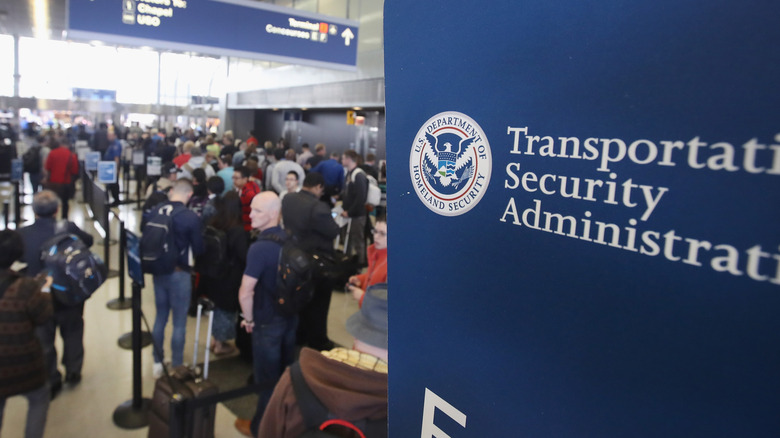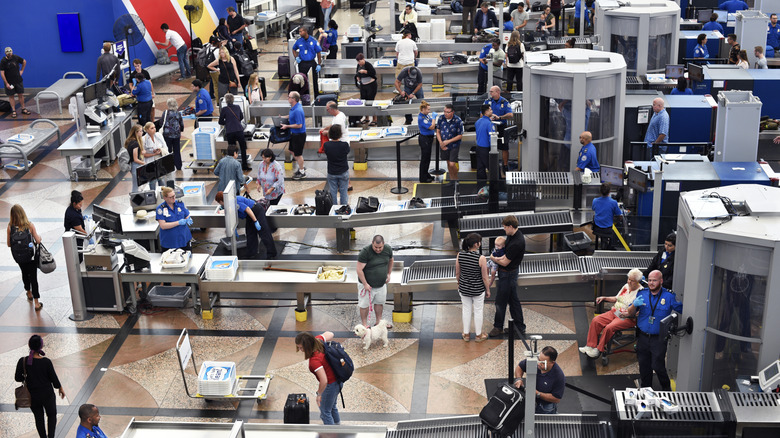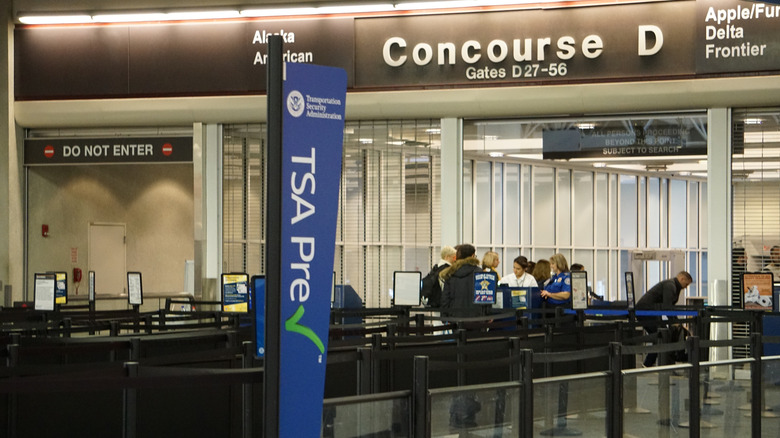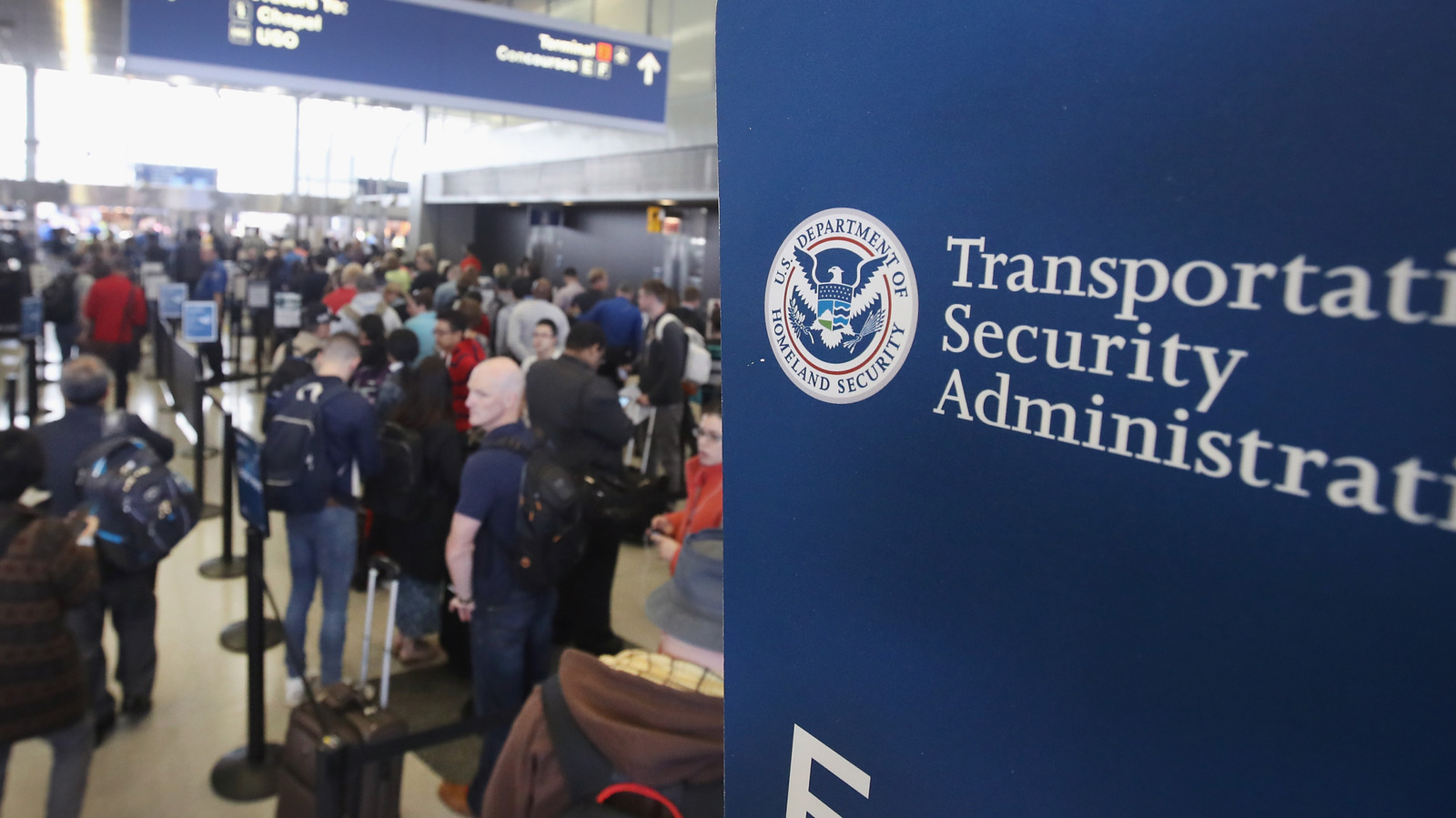 Scott Olson/Getty Images
Scott Olson/Getty Images
The Transportation Security Administration (TSA) has introduced a new program called the Modernized Alternative Identity Verification. This is an operational adaptation which builds upon current identity verification technologies that are already in place, providing a pathway for people who arrive at TSA checkpoints without any federally mandated forms of identification. Beginning November 20, 2025, travelers are now allowed to fly domestically in the United States without a REAL ID-compliant driver's license or a passport, but there's a catch. Participants in the program are required to pay a non-refundable fee of $18 per person to cover all fees associated with identity verification procedures, which may include technology like TSA's facial recognition, data processing, infrastructure maintenance, and customer support.
It's not mandatory to enroll in the program; however, those who do not participate or who try to bypass identification requirements without proper verification will not be granted access to the secure areas of the airport. More importantly, if you pay the fee and participate in the program, there are no guarantees that TSA will successfully verify your identity, meaning that you may still be denied entry to the secured areas of the airport or require additional screening processes. The purpose of this fee-based program is to make sure travelers without compliant identification have a clearly defined process laid out for verification while allowing TSA to recover operational costs associated with running the program. This policy is best suited to effectively balance security enforcement, in addition to an alternative identity verification at the cost of the traveler.
What is the REAL ID Act and its purpose?
 Robert Alexander/Getty Images
Robert Alexander/Getty Images
Simply put, a REAL ID-compliant license is a driver's license or identification card that meets the federal government's minimum security standards used to fly domestically. In response to the recommendations of the 9/11 Commission, the REAL ID Act was passed by Congress in 2005, establishing minimum security standards for state-issued driver's licenses and identification cards. The legislation was intended to emphasize the need to strengthen the identification verification process to prevent future terrorism and identity fraud. Under the REAL ID Act, states are required to be more rigorous in verifying a person's identification, including proof of citizenship or lawful status, residency, and personal documentation, reducing the possibility of forged or altered licenses and identification cards.
Real ID requirements were fully enacted by TSA on May 7, 2025 for domestic air travel, instructing adults over the age of 18 years old to present either a REAL ID-compliant license or another form of acceptable identification, like a U.S. passport. Any traveler who gives a non-compliant state-issued ID without an approved passport or alternative will likely have to comply with additional screening, delaying access to prohibited areas of the airport until verification can be completed.
This law is to improve aviation security while minimizing the risk of bad actors using deceptive or inadequate identification to gain entry to airport-sensitive zones or flights. TSA's goal is to make traveling easier, implementing other technologies like its digital ID system. The benefit of REAL ID for travelers is that it establishes a uniform federal standard for identification requirements across the entire United States, eliminating uncertainty and endless questions while traveling.
Long-term effects on Americans, tourists, and the travel industry
 Ontherunphoto/Getty Images
Ontherunphoto/Getty Images
For Americans, international travelers, and the travel industry, there are several implications in regards to the alternative identity verification program and the $18 fee. It provides a clear path to fly for American residents without a REAL ID or passport at a pre-determined fixed cost. The fee also covers a 10-day usage window, allowing travelers to use the program multiple times within that period without having to repay, to encourage a higher adoption rate of REAL ID licenses over time. Since international travelers need a valid passport to leave their home countries, this law doesn't affect them much. Viewing the travel industry as a whole, the proposal's most immediate impact is at TSA checkpoints.
According to a notice from govinfo.gov on the legislation's rule, travelers who use the alternative verification process should expect longer processing times for additional screening, which may slow checkpoint productivity during busy periods. The notice confirms this will be the case even though those presenting REAL ID-compliant licenses or passports will move through standard screening as normal. If you plan to use a digital ID on your phone, verify in advance that the airport you're traveling through accepts it. It is not TSA's intention to replace REAL ID, but to provide a backup option so flights are not disrupted when travelers forget or lose their identification.

